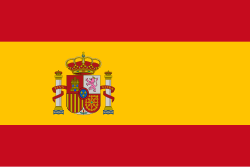When I told my father that I was going to the XXXIII Havana International Book Fair. For several days for work, his only request was. “Don’t buy any more books, you don’t have anywhere to put them anymore.”
I returned from the San Carlos de La Cabaña Fortress. The main venue of the event, with 31 new copies. And the catalog of digital proposals of the Arte y Literatura publishing house. Because I also read in this format that offers me multiple advantages.
In physical I will have about 100 books at home. And 496 digital works are grouped in a folder on my pone. Although I have not done an updated total count in both cases.
Could I store nearly 500 printed books in my home? Could any average young Cuban do it? The answer is clear: no. And this is one of the main reasons why the digital book is increasingly consumed and produced.
The fear that the digital book will replace the printed one is not so real or justified. Said Josué Pérez, poet and advisor to the Cuban Book Institute, during an interview. What exists is the need to use it, not only because in Cuba there is difficulty with paper printing. But because it is an alternative of the current times, he added.
HOW DO YOUNG PEOPLE READ?
This simple question was answered by 146 young people in an anonymous survey by Prensa Latina.
Although they shared common ideas, they also provided interesting arguments. That allow us to understand a little of the current literary panorama of the country in terms of offers and preferences.
65.8 percent of those surveyed are between 19 and 25 years of age. And are, for the most part, women. The novel was the most consumed genre, especially romantic, fantasy and science fiction.
At one year, 33.6 percent confessed to reading more than 20 books. And the second largest group (23.3 percent), reads between 5 and 10 books in the same period of time. 54.1% consume literary works in both formats, but 48.6% follow by reading digitally.
WHY?
Some answers were succinct, but forceful: “You can’t get paper books anymore and the novelties have to be read digitally”. “It’s what it is”, “It’s easier to get books digitally”. “Physical books are expensive”.
Other young people were a little more explanatory. And the following arguments summarize their perspective in a general way:
I like to read in physical format and I have several printed books. But the digital format is cheaper and allows me to read more, said one of the respondents.
I have physical books that I have acquired through state bookstores. And others that I have bought (private sellers) or have been given to me. But most of the ones I like are in digital because they do not arrive in the country or the prices are not affordable for me, said another.
The books that I would like are not found in physical form. And that is why there is always the digital way. But there is nothing like reading feeling the smell of printing in the book, said a third.
This last comment is an excellent bridge to know in which of the two formats they would prefer to read.
More than 60 percent of the 146 young people would prioritize reading printed Works. If the ideal conditions existed: attractive national and foreign offers with more affordable prices.
Digital reading is more comfortable because you can take it with you. And it gives you the ease of being able to have copies that you may not find physically. However, nothing compares to the smell of the pages of an open book, said a user.
I read much better in physical than on my cell pone. The book doesn’t run out of battery, another person pointed out with a certain dose of humor.
There are also audiobooks as a third option increasingly opted for by readers. Who argue that it gives them freedom to perform other tasks with their hands unoccupied.
WHAT DO CUBAN PUBLISHERS AND WRITERS SAY?
All the publishers consulted have a digital catalog. Which already suggests that they do not present themselves as detractors of this format.
For Michel Torres Corona, director of the Nuevo Milenio group. The digital book does not belong to the future. But is something present and undeniable. He acknowledged that these do not have the geographical and circulation limits of the physical ones.
In turn, the director of Letras Cubanas, Yanelis González. Said that the interest in reaching young people partly promoted the insertion of the digital format and audiobooks. Since the main audience of the publishing house is adults.
During a meeting at the headquarters of the Union of Writers and Artists of Cuba on the occasion of the Book Fair. Authors graduated from the Onelio Jorge Cardoso Training Center expressed their opinions on this “power struggle.”
Evidently there are more generations that are approaching digital books. That does not mean that I stop loving the paper book. But digitization has served me in practical terms to give visibility to my work, explained Cuban writer Barbarella D’Acevedo.
For Lisette Rodríguez, promoter of Ediciones Loynaz and the Hermanos Loynaz Cultural Center. It is important to adapt to new technologies, always in pursuit of development.
Young people and even children with all digital formats want them to be well received. We are working on adult audiences, who perhaps have a stronger resistance to the digital format. But they also come to understand that with a click they can access many works, she stressed.
The renowned researcher Francisca López Civeira. To whom this edition of the fair was dedicated. Believes that the digital book is a valid option. Because it does not weigh and allows reading in any circumstance, although the physical book feels closer.
In turn, essayist Virgilio López Lemus thinks that it is essential to continue increasing the number of digital titles. But, above all, the edition for phones and audiobooks because “that’s where young people go to read.”
AN UNNECESSARY CONFRONTATION
Seeing digital and printed books as natural enemies is a mistake that must be corrected. These are compatible formats and even more so complementary.
Both formats offer advantages, said one of the young people surveyed. Who added that digital libraries do not take up space and you can read almost anywhere. The physical tomes are an attractive and closer experience.
The digital title did not come to exclude the printed one. It is a way of repowering the reach of the book. That habit of reading in physical form should not be lost. But shared with the diversity of formats that also contribute to a much more enriched reader experience, Torres Corona emphasized.
As the director of the Onelio center, Ernesto Pérez Castillo, said. “Literature is the journey, and books are the vehicle. One can travel in several means, but the important thing is the trip.”
With information from Verónica Núñez Lastres /Prensa Latina
Translated by Radio Angulo
- KTP Factory in Holguin Repairs Sprayers - 17 de December de 2025
- Gender Violence in Cuba: The Urgent Need to Close the Gap Between Law and Life - 17 de December de 2025
- Cuba Announces Selection of Top Athletes for 2025 - 17 de December de 2025

